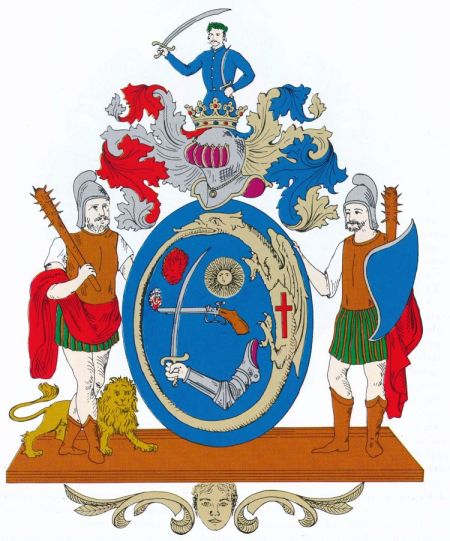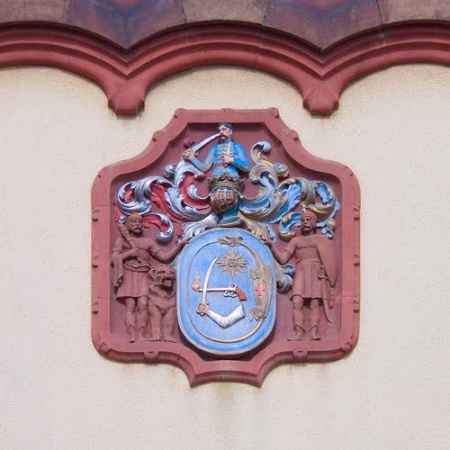Hajdú Province: Difference between revisions
Knorrepoes (talk | contribs) No edit summary |
Knorrepoes (talk | contribs) m (Text replacement - "===Official blazon===↵↵===Origin/meaning===" to "{| class="wikitable" |+Official blazon |- |'''English''' | blazon wanted |} ===Origin/meaning===") |
||
| Line 9: | Line 9: | ||
[[File:hajdu.ahe.jpg|center|450 px|Arms (crest) of {{PAGENAME}}]] | [[File:hajdu.ahe.jpg|center|450 px|Arms (crest) of {{PAGENAME}}]] | ||
= | {| class="wikitable" | ||
|+Official blazon | |||
|- | |||
|'''English''' | |||
| blazon wanted | |||
|} | |||
===Origin/meaning=== | ===Origin/meaning=== | ||
Revision as of 14:01, 29 January 2024
| Heraldry of the World Civic heraldry of the Austro-Hungarian Empire |
HAJDÚ PROVINCE
| English | blazon wanted |
Origin/meaning
The arms were officially granted in 1877.
The golden dragon with the cross is taken from the family arms of István Bocskai, Prince of Transylvania and Hungary from 1605 to 1606. The other symbols all refer to the Battle of Álmosd on Pctober 15, 1604, where Prince Bocksai won his first battle during the uprising against the Emperor at the time.
The supporters also symbolize the heroism and heroism of the Hajdú and represent the ancient warriors of Samson (with the lion) and Achilles. The crest shows a Hajdú warrior.
The region became a separate region afther 1604 and remained a special area until 1876 when it became a proper province.
| The arms on a house in Debrecen (source) |
Contact and Support
Partners:
Your logo here ?
Contact us
© since 1995, Heraldry of the World, Ralf Hartemink 
Index of the site
Literature : Csáky, 1995











